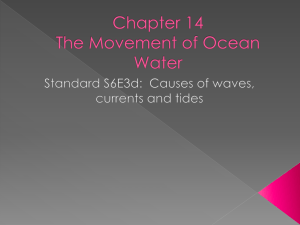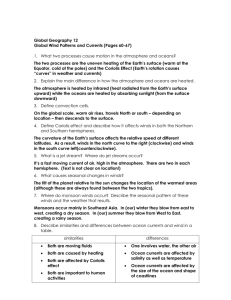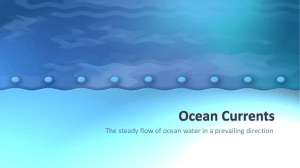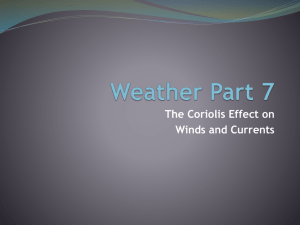Ocean currents
advertisement
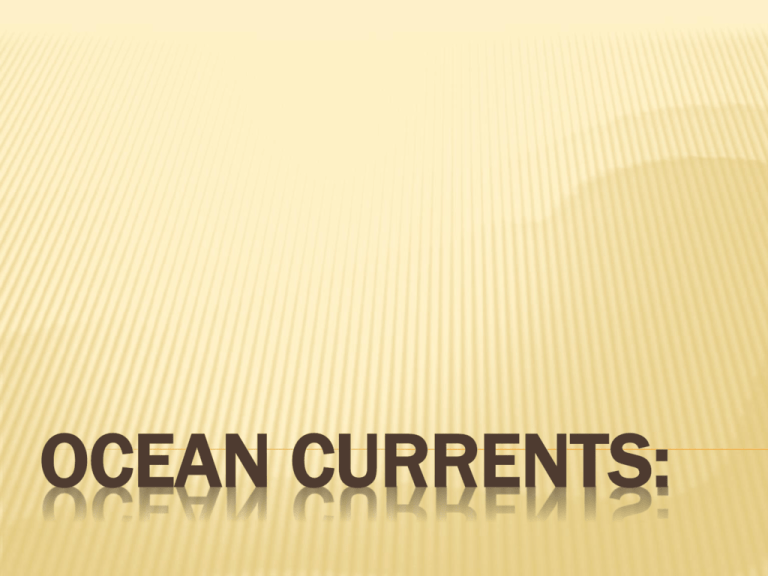
OCEAN CURRENTS: CURRENT: Continuous and directed movement of ocean water TWO TYPES: Surface Currents Deep Water Currents SURFACE CURRENTS: 10% of water in ocean The upper 400m of the ocean DEEP WATER CURRENTS: 90% of water in ocean Waters move around the ocean basins by density differences Density differences a function of different temperatures and salinity TWO TYPES OF FORCES: Primary Forces: Start the water moving: Solar Heating Winds Gravity Coriolis Effect Secondary Forces: Influence where the current goes SOLAR HEATING: Causes water to expand Water is about 8 cm higher than middle latitudes, thus water wants to flow down slope WINDS: Winds blowing on surface of the ocean push the water Water piles up in the direction the wind is blowing GRAVITY Will pull water “down the hill” when water mounds up CORIOLIS EFFECT: An inertial effect due to the spinning of the earth When going towards pole you are coming from an area that is moving faster, thus the deflection with the direction of the Earth’s rotation When going to the equator, the deflection goes against the spin of the Earth, due to the spin of the Earth GYRES: The effect of winds and Coriolis effect results in circular flows of water made of several currents EKMAN TRANSPORT: Surface water is blown away by winds, dragging the water beneath it The deflection due to Coriolis Effect creates a spiral pattern and a net current to the right or left of wind Results in upwelling UPWELLING: Nutrient rich water from the deeper parts of the ocean rises to the surface to replace the water blown away Animation: DEEP WATER CIRCULATION: Occur where the temperature is cold and relatively high in salinity Thermohaline Circulation Thermo = heat, haline = salt EARTH CONVEYOR BELT Salt rich, warm water is blown north by the Gulf Stream, where is cools and sinks This provides heat to the polar regions and nutrients everywhere Possibly disrupted by global warming LOCAL CURRENTS: formed by a combination of tides, winds, waves, and rivers/streams Longshore currents and rip currents LONGSHORE CURRENTS: When waves strike the shoreline at an oblique angle, causing resultant waves to move parallel with the shoreline RIP CURRENTS: Formed when waves push the water in front of it sideways till it can find a path out to sea




